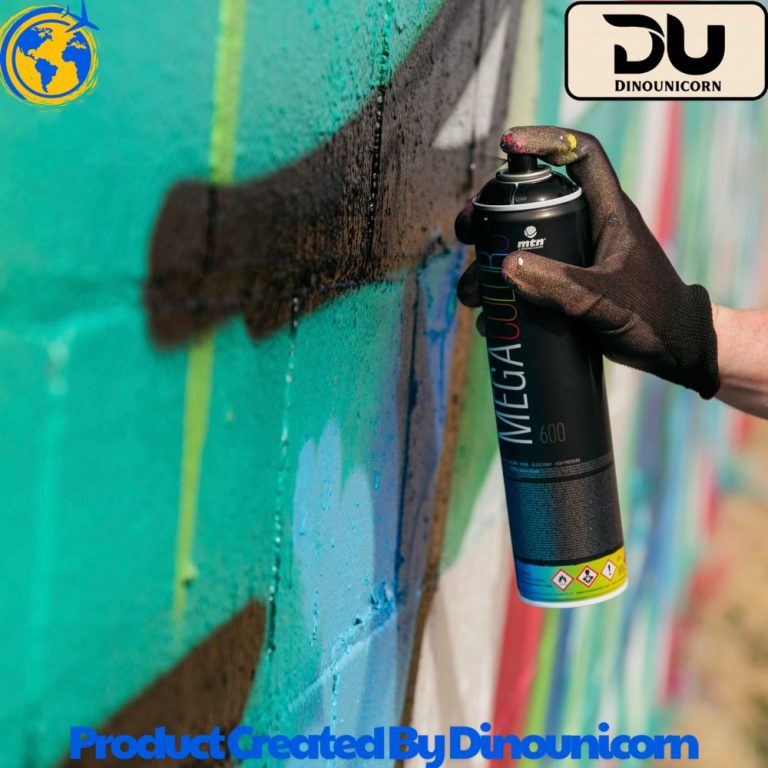Blog
Why Is It So Hard to Ship Spray Paint?
Why Is It So Hard to Ship Spray Paint?
Shipping spray paint can seem like a straightforward task, but it’s actually fraught with challenges due to the various regulations and restrictions placed on aerosol products. From hazardous materials laws to special packaging requirements, shipping spray paint safely requires a solid understanding of the rules governing these products. In this comprehensive guide, we will explore the difficulties associated with shipping spray paint, why it’s so hard to ship it, and the best practices for handling aerosol products during transportation.
Why Spray Paint Is Classified as Hazardous Material
One of the key reasons spray paint is difficult to ship is because it falls under the category of hazardous materials. Spray paints contain pressurized gases and often flammable chemicals, making them potentially dangerous for transport. These products are classified as hazardous materials under the U.S. Department of Transportation (DOT) regulations, which means they are subject to strict guidelines and require special handling and labeling during shipping.
Aerosol cans, like those containing spray paints, are particularly challenging because they are pressurized. This makes them susceptible to exploding or leaking if not handled carefully, especially under extreme temperature conditions. Due to their pressurized contents and potential hazards, aerosol products are regulated more strictly than other types of goods. For these reasons, shipping aerosol products such as spray paint involves additional paperwork, specialized packaging, and must often be shipped via specific carriers that are certified to handle hazardous materials.

Shipping Regulations for Spray Paint
Shipping spray paint legally is not as simple as it might seem. Several regulations are in place to ensure safety during the shipping process. These regulations include restrictions on where and how spray paints can be transported. Here’s an overview of the most important shipping regulations:
- DOT Hazardous Materials Regulations (HMR): Spray paint, like other aerosols, is subject to HMR rules. These rules include proper labeling, documentation, and packaging to ensure the safety of all parties involved in the shipping process.
- IATA Regulations for Air Shipments: Aerosol paints cannot typically be shipped by air unless specific precautions are followed. IATA, the International Air Transport Association, has guidelines for shipping flammable aerosols. These include requirements for special packaging and labeling to indicate that the products are dangerous goods.
- Carrier Restrictions: Major carriers like UPS, FedEx, and USPS often have their own policies regarding the shipment of aerosol products. Some may refuse to ship spray paint altogether, while others may require specific labeling and packaging methods.
To help you navigate these regulations, several resources provide detailed guidelines for shipping aerosol sprays safely, including Hazmat School’s guide on shipping aerosols and Scavenger Life’s shipping advice.
The Difficulties in Shipping Aerosol Cans
There are several reasons why aerosol cans and spray paints are difficult to ship. One of the biggest challenges is the pressurized nature of these cans, which can cause them to explode if not handled properly. This is why aerosols are considered dangerous goods and are subject to extensive regulations. Some of the specific difficulties in shipping aerosol cans include:
- Temperature Sensitivity: Extreme temperatures, both hot and cold, can affect the integrity of the can, causing it to leak, rupture, or explode. This risk is especially high when shipping spray paints via air, where temperature fluctuations are more likely.
- Pressure Sensitivity: The pressurized contents of an aerosol can make it prone to failure if subjected to rough handling or changes in pressure.
- Carrier Restrictions: Many carriers, especially those offering air shipping services, have strict guidelines or even refuse to ship flammable products like aerosol paints altogether. This can significantly limit the shipping services available to sellers or buyers of aerosol sprays.
These challenges are compounded by the need for specific labeling and documentation. Spray paint must be clearly marked as hazardous, and special shipping labels must be affixed to the package, indicating that the contents are dangerous goods.
Shipping Guidelines for Spray Paint
When shipping spray paint, there are specific guidelines you must follow to ensure that the product reaches its destination safely and complies with all regulations. Here are some key shipping guidelines for spray paint and other aerosol products:
- Packaging: Proper packaging is crucial to avoid damage and leakage. Use robust packaging materials such as bubble wrap or foam inserts to secure the canister in place. Aerosol cans should be sealed tightly to prevent leakage and potential chemical reactions.
- Labeling: Always use the correct hazmat labels when shipping aerosol paint. These labels indicate that the item is flammable and potentially hazardous. Be sure to follow the guidelines for labeling aerosol cans according to the carrier’s requirements.
- Documentation: Along with proper labeling, you’ll need to provide the appropriate documentation that indicates the contents are hazardous. This can include a Material Safety Data Sheet (MSDS) or a Declaration of Dangerous Goods form, depending on the carrier and destination.
For more detailed information on how to package and ship aerosol products, check out this article on Hazmat School’s blog.

How to Package Spray Paint for Shipping
Packaging spray paint for shipping requires extra care. Inadequate packaging can result in accidents, leaks, or explosions, all of which can be avoided with proper preparation. Here’s a step-by-step guide to packaging aerosol sprays safely:
- Wrap in Protective Materials: Use bubble wrap, foam, or packing peanuts to cushion the canister. Ensure that the spray paint is tightly secured to prevent it from shifting or being damaged during transit.
- Use a Sturdy Box: Select a strong, durable box that can withstand the pressures of shipping. Double-boxing is often recommended to add an extra layer of protection.
- Include Safety Labels: Affix all required hazardous material labels to the box, including those indicating that the product is flammable and contains aerosol propellants. This helps inform carriers and handlers of the potential dangers.
- Sealed and Leak-Proof: Ensure that the canister is properly sealed, and check for any possible leaks before shipping.
Transporting Spray Paint Safely
To transport spray paint safely, it’s essential to consider both the regulatory requirements and the physical handling of the products. Here are some tips for transporting spray paint safely:
- Choose the Right Carrier: Not all carriers accept aerosol products for transport. Make sure to select a carrier that complies with hazardous material shipping rules and has experience handling dangerous goods.
- Avoid Air Shipping if Possible: If you must ship spray paint by air, ensure that the product is well-packaged and that all necessary documents are included. Air transport increases the risk of temperature-related issues, so try to use ground shipping if possible.
- Check Local Regulations: Be aware that different regions and countries may have different regulations for shipping hazardous materials. Always check the shipping rules of the destination before proceeding.
Long-Distance Shipping of Spray Paint: What You Need to Know
Long-distance shipping of spray paint presents additional challenges, especially when crossing state or country borders. Here are some things you need to know about shipping aerosol paints over long distances:
- International Regulations: Different countries have different rules for importing hazardous materials. Some countries may outright ban the import of aerosols, while others may require special permits or documentation.
- Customs Declarations: Ensure that you correctly fill out all customs forms, declaring the contents as hazardous materials. Failure to do so can result in fines or confiscation of the goods.
- Temperature Control: Consider the route and expected weather conditions when shipping aerosol paints. High heat can cause cans to explode, while extreme cold can cause the contents to freeze.
For tips on how to handle international shipments of aerosols, visit Phase V’s guide to hazardous material compliance.
Restricted Shipping Items: Why Spray Paint Is Often Banned or Limited
Spray paint is often classified as a restricted shipping item due to the risks it poses during transit. The reasons for these restrictions include:
- Flammability: The primary reason spray paints are restricted is because they are highly flammable. This makes them dangerous to ship, especially by air.
- Pressurized Contents: Aerosols are pressurized, meaning that mishandling or exposure to high temperatures can lead to leaks or explosions.
- Carrier Policies: Many carriers, including USPS, FedEx, and UPS, impose restrictions on the shipment of aerosol cans due to the risks involved.
Understanding these restrictions is crucial for anyone looking to ship spray paint or aerosol paints safely.
The Impact of Shipping Flammable Products
Shipping flammable products like spray paint comes with several risks. The most significant risk is the potential for fire or explosion if the product is mishandled or exposed to extreme conditions. Some key considerations for shipping flammable products include:
- Proper Packaging: Flammable goods must be packaged securely to prevent accidental leakage or ignition.
- Temperature Sensitivity: Extreme temperatures can cause aerosol paints to leak, rupture, or explode. Shipping via ground transportation can reduce this risk.
- Carrier Limitations: Many shipping services have strict guidelines or outright refuse to handle dangerous goods like spray paints.
To mitigate these risks, it’s important to select the appropriate shipping services and follow all guidelines for hazardous materials.

How to Ship Paint and Aerosol Products Effectively
Shipping paint and aerosol products like spray paint requires attention to detail and adherence to specific regulations. Here’s how to ship spray paint effectively:
- Select the Right Carrier: Choose a carrier that handles hazardous materials and has experience with aerosol sprays. Some carriers offer specialized services for dangerous goods.
- Comply with Regulations: Ensure that you follow all shipping regulations related to aerosols. This includes using the correct packaging, labeling, and documentation.
- Offer a Quote: If you’re a seller, make sure to provide a clear quote to buyers, outlining any additional fees or requirements for shipping aerosol products.
Conclusion: Shipping Spray Paint – Navigating the Challenges
Shipping spray paint is a complex process that requires careful attention to shipping regulations, packaging requirements, and the specific risks associated with aerosol sprays. By understanding the challenges and following the guidelines outlined in this article, you can ensure that your spray paint products arrive at their destination safely and legally.
If possible, please visit dinounicorn.com or freshmilktee.com to support us.
Frequently Asked Questions
1. Why is spray paint considered a hazardous material?
Spray paint is classified as hazardous due to its flammable nature and pressurized contents. These properties make it dangerous to ship, especially by air.
2. Can I ship spray paint via USPS?
USPS has strict regulations for shipping hazardous materials, including spray paints. It’s important to check with USPS or any other carrier for their specific requirements.
3. What packaging is required for shipping spray paint?
Spray paint must be packaged securely with protective materials like bubble wrap or foam inserts. Additionally, proper hazardous material labels must be attached to the package.
4. Can I ship spray paint internationally?
International shipping of spray paints is subject to the regulations of both the originating country and the destination country. Many countries have strict rules about importing flammable products. Always check the regulations beforehand.
5. What are the shipping costs for aerosol products?
Shipping costs can vary depending on the carrier, the size of the spray paint cans, and whether special services are required to handle hazardous materials.
 Skip to content
Skip to content

